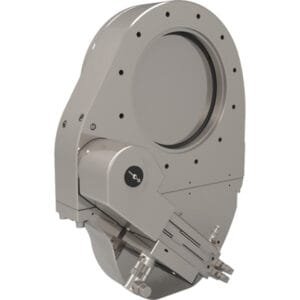Silver-Plated Annealed OFHC Copper Gaskets for ConFlat (CF) UHV Flanges
TFM’s Silver-Plated Annealed OFHC Copper Gaskets for ConFlat (CF) UHV Flanges are designed for ultra-high vacuum (UHV) environments that demand both superior vacuum sealing and enhanced chemical resistance. These gaskets combine the softness and high purity of oxygen-free high-conductivity (OFHC) copper with the corrosion-resistant benefits of silver plating, making them ideal for demanding vacuum and cryogenic applications.
Key Features
Silver Plating for Enhanced Corrosion Resistance
A uniform silver coating over the copper gasket provides a chemically inert surface that resists oxidation, sulfurization, and aggressive process gases. This increases the gasket’s lifespan and maintains its sealing integrity in reactive or moist environments.High-Purity Annealed OFHC Copper Core
The base of the gasket is made from annealed OFHC copper, known for its exceptional thermal and electrical conductivity. The annealing process ensures the copper remains soft enough to conform tightly to flange surfaces, ensuring a vacuum-tight seal.Optimized for UHV Systems
These gaskets are precisely engineered to fit ConFlat (CF) UHV flanges, providing a consistent and reliable seal in systems operating at pressures as low as 10⁻¹¹ Torr.Superior Thermal and Electrical Conductivity
The combination of OFHC copper and silver allows for excellent heat and current transfer across flange interfaces, making these gaskets ideal for systems where thermal management is critical.Non-Magnetic and Vacuum-Compatible
The materials used are non-magnetic and ultra-clean, supporting sensitive scientific instruments and processes that require minimal magnetic interference and outgassing.
Applications
High-Purity and Reactive Gas Environments
Common in systems utilizing corrosive gases, including hydrogen, halogens, or ammonia. The silver plating minimizes chemical reaction on the gasket surface.Cryogenics and Superconducting Systems
Excellent for cryogenic applications due to superior thermal conductivity and compatibility with ultra-low temperatures.Synchrotron Radiation and Particle Accelerators
Widely used in beamline sealing, where vacuum integrity and minimal contamination are critical.UHV Surface Science and Analytical Equipment
Suitable for XPS, SEM, TEM, and other high-vacuum analytical instruments.Thin Film Deposition and Etching Systems
Supports clean operation in sputtering, evaporation, and etching environments where gas purity and system vacuum are essential.
Specifications
Material Core: Annealed Oxygen-Free High Conductivity (OFHC) Copper
Plating: Uniform Silver (typically 5–10 µm thickness)
Compatibility: ConFlat (CF) flanges
Vacuum Rating: Suitable for UHV systems down to 10⁻¹¹ Torr
Temperature Range: Up to 450°C in vacuum
Conductivity: High thermal and electrical conductivity
Chemical Resistance: Excellent due to silver surface
Reusability: Single-use gasket; reusable flanges
Advantages Over Standard Copper Gaskets
Reduced tendency to bond or seize to knife edges during use
Improved resistance to tarnishing and corrosion in reactive atmospheres
Lower risk of particulate contamination due to smoother surface
Better performance in environments exposed to water vapor or trace acids
Why Choose TFM?
At TFM, we deliver precision-engineered UHV sealing solutions tailored to meet the exacting needs of advanced scientific, industrial, and research-grade vacuum systems. Our Silver-Plated Annealed OFHC Copper Gaskets for ConFlat (CF) UHV Flanges provide a unique blend of vacuum reliability, corrosion resistance, and superior conductivity—trusted by professionals in the semiconductor, cryogenics, and high-energy physics sectors worldwide.





Reviews
There are no reviews yet.